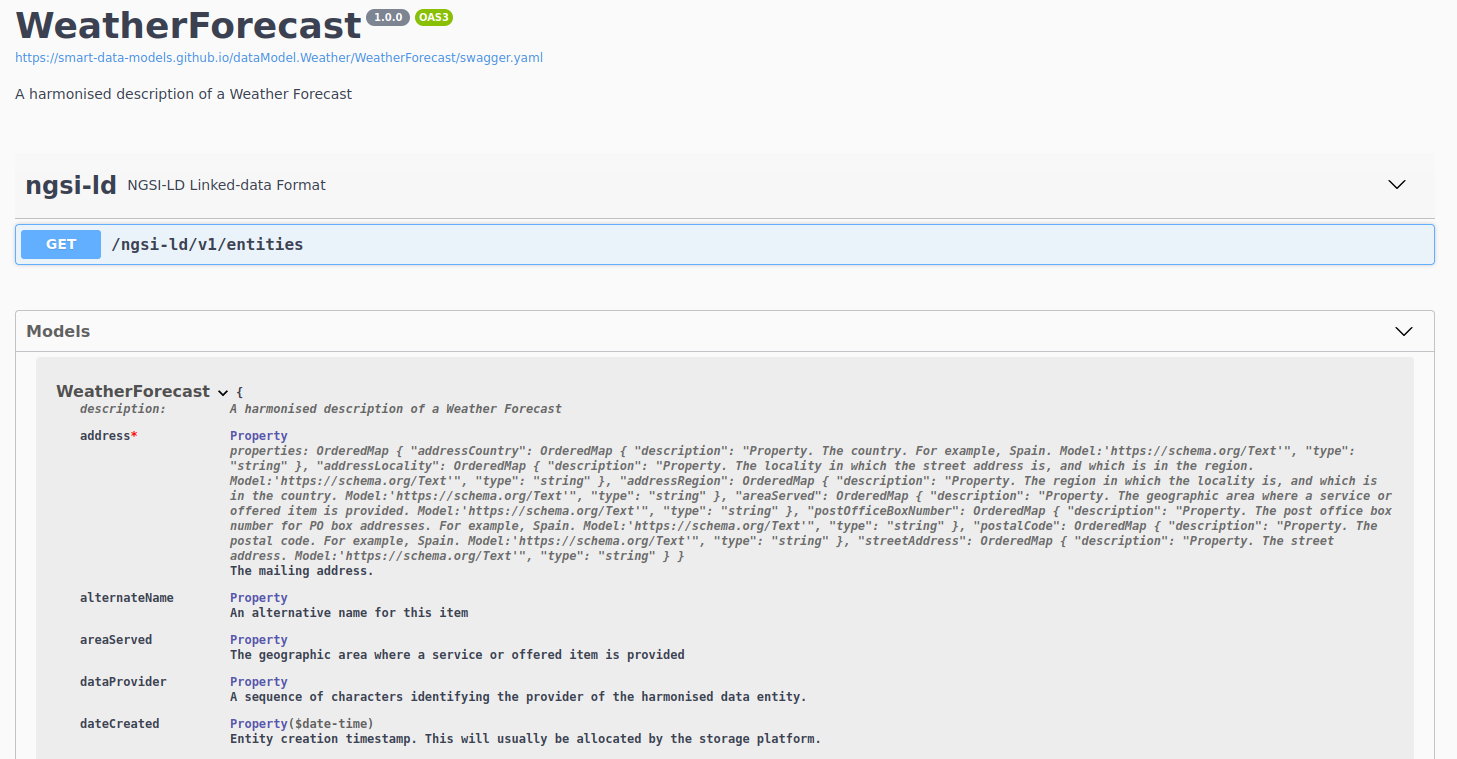Now all data models have an interactive specification. (As long as they have examples)
This is the first step to deeper interactive services for every data model contributed.
See the example for weatherForecast.

Now all data models have an interactive specification. (As long as they have examples)
This is the first step to deeper interactive services for every data model contributed.
See the example for weatherForecast.

The file common-schema.json compiles those properties massively used across the different data models in the different domains.
The property userAlias has been included to store those anonymous identifiers of a user that cannot be traced back to the user.
It can be referenced in any data model just by including this code
“userAlias”: {
“$ref” : “https://smart-data-models.github.io/data-models/common-schema.json#/definitions/userAlias”
}
The subjects RawWaterManagement and WaterNetworkManagement are now being renamed to be more water-related.
RawWaterManagement is now OpenChannelManagement because these models help to describe the management of water through open channels.
WaterNetworkManagement is now WaterDistributionManagementEPANET because these data models are capable of describing the infrastructure and providing an output to EPANET together with the software developed in the FIWARE4Water project.
This a general review of the contributions’ manual with these changes:
Located in the upper menu of the site.
It has been updated the database for searching properties, two main improvements:
This is an alpha version (so you can expect errors and not being complete). Use it at your own risk. Please report errors and suggestions at info@smartdatamodels.org
Call: https://smartdatamodels.org/extra/ngsi-ld_generator.php
Parameters: (Mandatories)
Use any data model from Smart Data Models initiative and paste it into the form. Then you’ll get a page with a random payload compliant with the data model. Refresh for more.
You can also use this form
New data models for the dataModel.WaterNetworkManagement Subject
These data models allow integration with the water network simulation software EPANET.
In the directory utils of the umbrella repository data-models there is a new python script that checks if a schema is properly documented and if the payload is correctly located and validates against the schema.
the new data model Anomaly is located in the subject datamodel.Alert:
Anomaly: This entity contains a harmonized description of an anomaly.